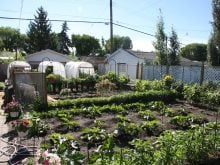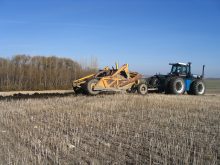Your canola is just beginning to flower. Conditions for sclerotinia have been marginal. Do you spray or not spray? Or wait to see and maybe miss the window altogether?
There are several factors to consider:
- It’s input money down the tube if you worry yourself into spraying when you don’t need to.
- It means less yield money if you take a risk and try to save money by not spraying.
- It’s wasted money if you get it right and spray at the exact right moment, but also spray hundreds or thousands of acres in spots that don’t need it, either because of flood or clean, high areas.
Read Also

Phosphate prices to remain high
Phosphate prices are expected to remain elevated, according to Mosaic’s president.
Bayer CropScience says it has a solution to the sclerotinia-decision dilemma.
The company’s new Zone Spray system helps canola growers improve their fungicide program by selectively protecting the highest production zones while avoiding application in zones with no economic benefit.
Zone Spray is part of Bayer’s Digital Farming Field Manager program.
Zone Spray allows farmers to create zone-specific application maps ready for their sprayer terminals. It analyzes satellite and weather data, risk models and historical data entered by the farmer. Bayer’s agronomic expertise combines all this information to create maps with seven risk zones. These enable growers to make informed decisions on which zones to spray. The system quickly converts the decisions into a Zone Spray prescription application map.
Zone Spray was first hatched as Zoner, a web platform developed by the German company IntelMax and acquired by Bayer in 2015. Zoner was initiated to create integrated spatial analysis of aerial and satellite imagery, yield data, soil electrical conductivity, grid soil data, topography and other data with geo-reference for precision agriculture. The platform performs delineation of management zones, soil sampling points and navigation routes for field scouting.
Zoner is used in many agricultural regions of the world to create prescription files for variable rate applications of fertilizer, seeding and targeted applications of crop protection chemicals. In the current Bayer-owner form, Zone Spray will be used in Western Canada to target disease in canola.
The Zoner concept is similar to conventional data mapping with multiple overlays. However, Zoner provides access to a large archive of multispectral satellite imagery from Landsat, Sentinel 2 and RapidEye, with images dating back to 1984. For many specific fields, there are hundreds of geo-referenced images available and new images are added daily. The system is fully integrated with Open Street Maps, Bing and Google.
Bayer Zone Spray will incorporate new satellite images weekly, and more frequently during sclerotinia-risk periods. This depends on cloud conditions, according to Warren Bills with Bayer Crop Science Canada.
“The system presents each satellite image in the form of a seven-zone map. The user decides on a field-by-field basis which specific zones receive an application and which ones don’t,” Bills explained in an email interview. He said this process builds the on-off prescription map for the sprayer. It takes only five to 10 minutes per field.
Data such as crop type and seeding date must be entered into the system by the farmer.
“For the 2018 season in Canada, Zone Spray is priced at $1.50 (per) acre based on the calculated field boundary acres of each prescription downloaded. For now, the focus is strictly on sclerotinia in canola.”
Zone Spray is compatible with high clearance sprayers that have boom section or nozzle shut-off control. They must have a mapping monitor capable of loading and executing a prescription. Some of the eligible sprayers include the following:
- John Deere 2630, 2600, 4600
- CaseIH Pro700, Pro600
- New Holland Intelliview III, IV
- Raven Viper, Viper Pro, Viper 4, 4+, Envisio Pro
- Trimble FMX, TMX-2050, CFX-750
- Ag Leader Integra, InCommand
- Topcon X30, X20, X25
















